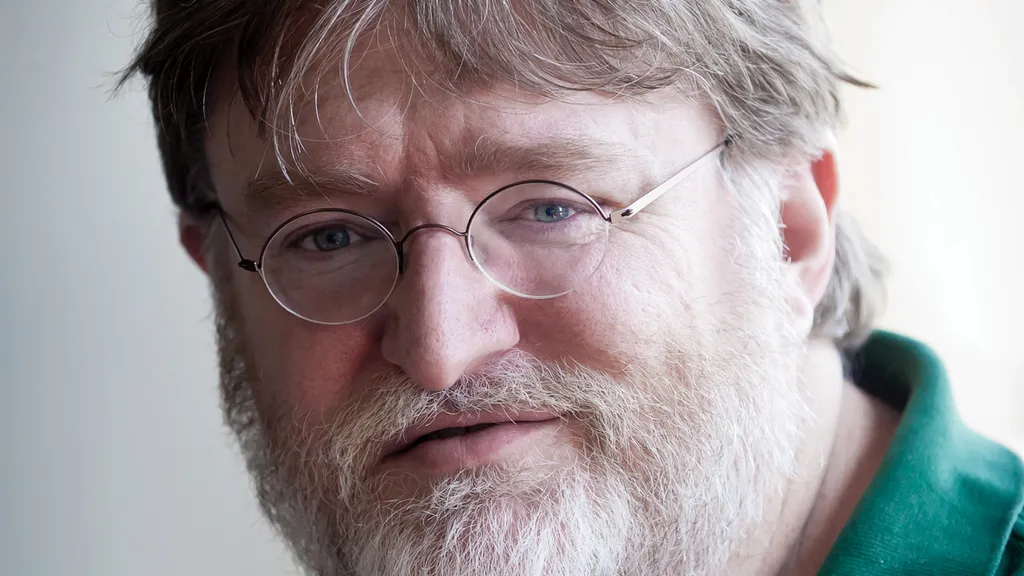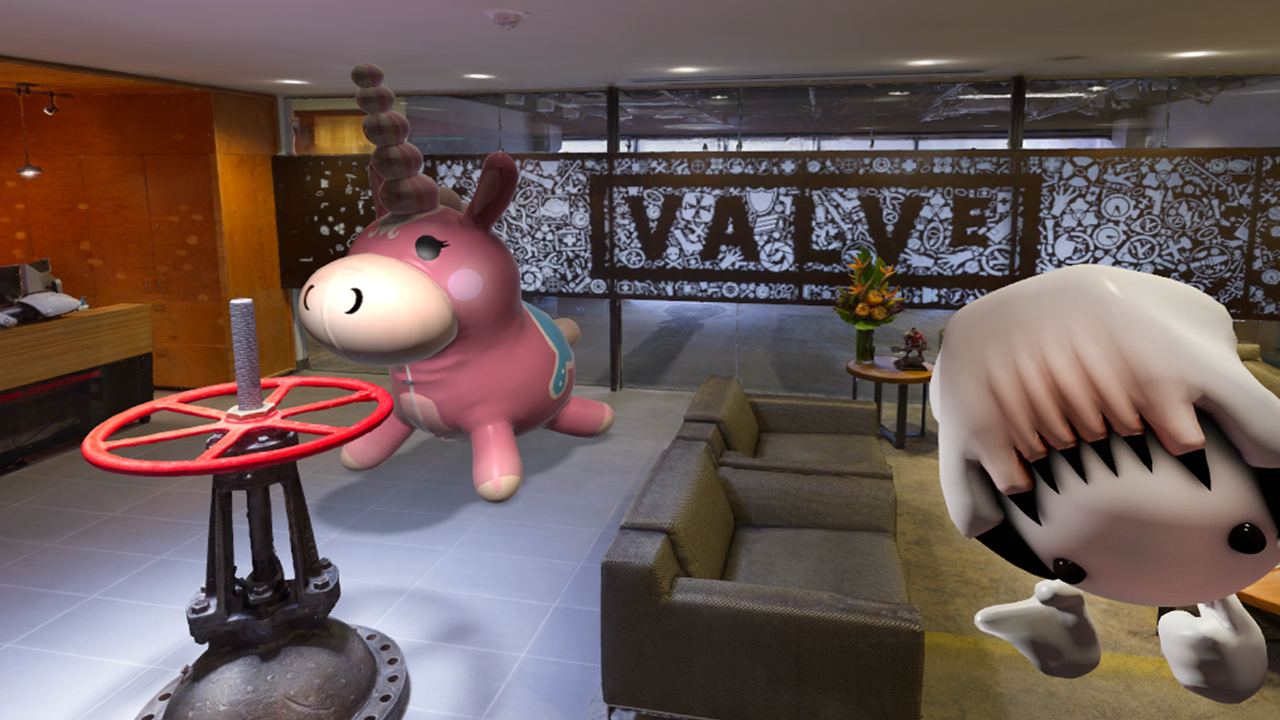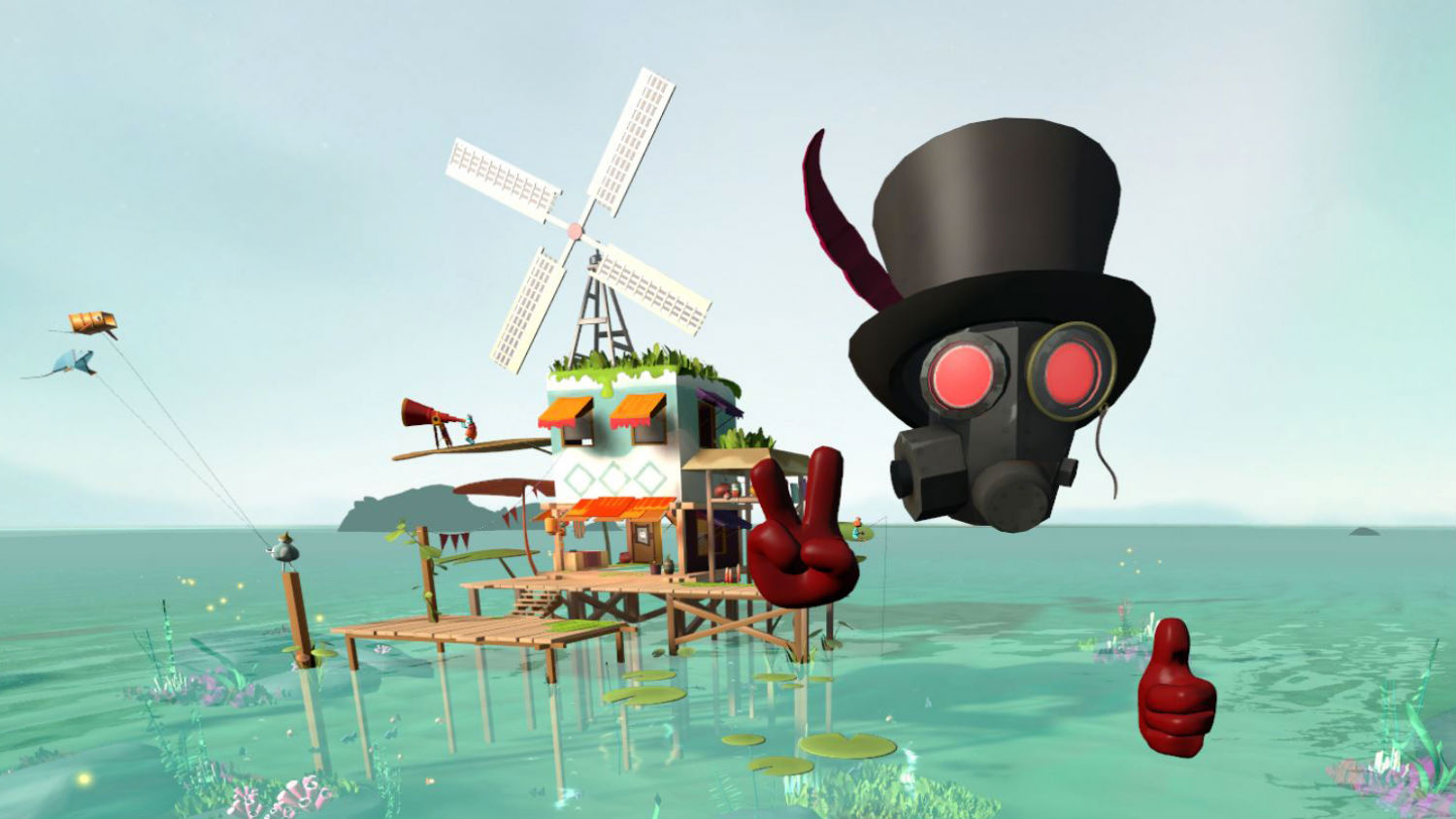The knowledge that Valve was working on a VR game was enough to get any headset fan excited. But the company’s plans for the future go well beyond that.
At a press briefing in Seattle this week, as reported by Gamasutra, company founder Gabe Newell teased what it was working on in VR right now, and shared thoughts about where he thought the tech would go in the near future. He said that he believed room-scale VR, a concept the company introduced with the help of the HTC Vive, would eventually grow into “house-scale” VR that transform a series of rooms into a VR experience.
That obviously requires positionally-tracked (hopefully inside-out, unless Valve wants base stations in every room of our houses) wireless headsets, which Newell called a “solved problem”. He said wireless VR would be an “add-on” this year, likely referring to kits like TPCAST’s wireless adapter for the Vive, and that it would become an integrated feature by 2018. Could that possibly suggest there will be wireless SteamVR headsets — maybe even a second Vive — next year?
Newell also revealed that the company is actually working on not one but three full VR games. That doesn’t mean short tech demos, that means three actual games.
The SteamVR creator first confirmed that it was working on a full game for the tech at last years Steam Dev Days event, and Newell recently reconfirmed its interest in developing content for headsets.
This week, though, he said that working on both VR hardware with the Vive and software gave the company the kind of advantage that legendary Nintendo developer and Super Mario creator Shigeru Miyamoto also benefited from.
“[Miyamoto] has had the ability to think about what the input devices & the design of systems should be like while he’s trying to design games,” Newell said. “Our sense is that that’s going to allow us to actually build much better entertainment experiences for people.”
Newell explained that these projects will also hopefully teach positive and possibly negative lessons to other developers, further describing the games as “very different.”
“Each game developer will be able to look at those and say, that was great, that was not as great,” he said. “Which is part of, from our point of view, that’s a useful charateristic of these three.”
Previously, Valve has released two VR experiences. The first, The Lab, is a free collection of minigames from the company, showcasing just what you can do with the HTC Vive and room scale VR, two technologies that are sure to be supported in the company’s new games. The second was Destinations, a sort of hub app that allows people to visit user-created worlds, either with friends or on their own. They’re both great, but they’re not the true games that Valve crafts so well.
As for if you’ll see these games only on Vive? Newell’s stance on exclusive content didn’t make it seem that way. “It’s like you’ve got people building proprietary walled gardens who say be exclusive to us and we’ll give you this bunch of money,” he said, likely rreferringto Facebook’s Oculus and its Home ecosystem. “And we’re like, we hate exclusives. We think it’s bad for everybody, certainly in the medium- to long-term, and I’d probably argue in the short-term as well.”
That’s not a new stance from the company, and Newell reiterated that Valve works with developers to help “manage your cashflow”.
At this point, we don’t need to remind you of the developer’s resume, and why you should be looking out for these games. The company previously suggested that we might see at least one of them at some point this year, and the 2017 Game Developers Conference is right around the corner. Could Valve be planning to steal the show there?




























